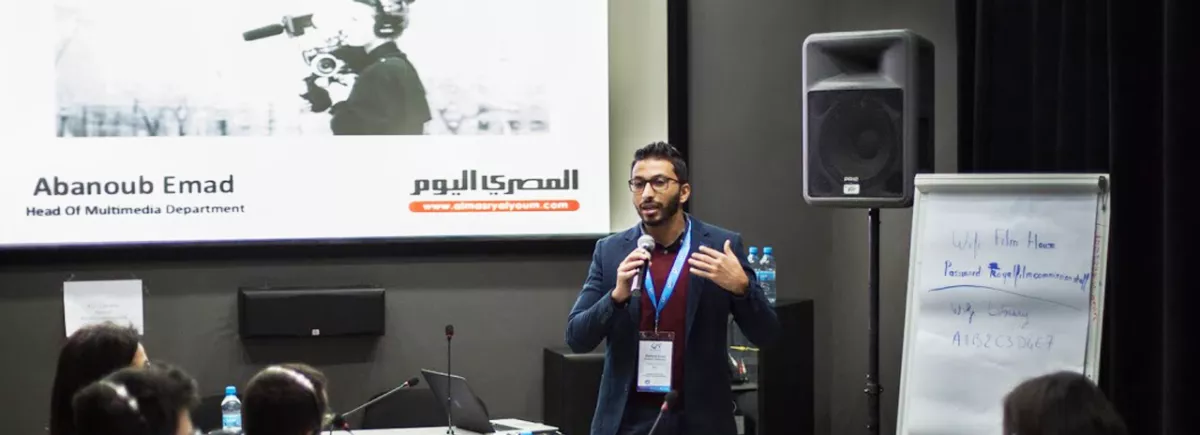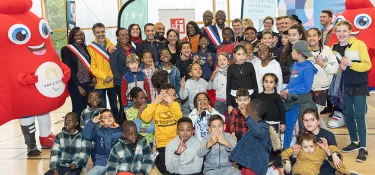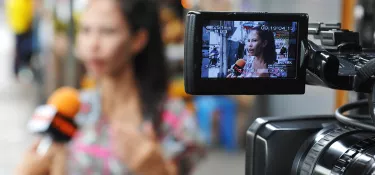
Arab newspapers: the difficult digital transition
Related project
4M "Transition to online for Arabic-language newspapers"The two-day 4M workshop, which took place in Amman, the capital of Jordan, highlighted the many difficulties faced by Arab newspaper editorial teams. Which methods deliver results?
"The reason why it's difficult to make the transition to digital is because of journalists."
This sentence was uttered by practically every single participant in the seminar. The transition to web-based news is difficult to swallow for journalists – for them, print is sacred. They refuse to write exclusively for the web, which they deem to be less serious and less dignified than print formats. Philippe Laloux, editor-in-chief of Belgian daily
Le Soir, believes he has found the solution: journalists need to stop thinking about the format in which their work is published. He even recommends dividing journalists up into specialist reporters and editors. Reporters would be responsible solely for writing the most comprehensive articles possible, while editors would deal with all elements of publishing, formatting and selecting supporting information. With format no longer being a consideration, those tasked with drafting the articles would be less put off by the web. It is an information service – rather than information itself – which needs to be sold.
Since the web provides constant updates, newspapers have been forced to adapt their content. Print has become a space for providing analysis rather than information. Another challenge faced by Arab media is that the written language is different from the spoken form, and web language is closer to the latter variety. As a result, journalists find it difficult to tailor their work to the web by moving away from written Arabic.
Mobile: the future?
One word is on the lips of every single editorial team: mobile. Mobile for communicating within the publication, mobile for disseminating information, mobile for finding information: mobile phones have become indispensible and Arab media are putting all their efforts into these devices.
"Websites need to be mobile-responsive" – editorial boards repeat this statement over and over. For some publications, mobile phones account for 70% of the total number of views. Creating tailored content is therefore crucial – and not only for the purposes of the device. Mobile users rarely spend more than 10 seconds on a website; information therefore needs to be provided in as short a time as possible and users also have to be enticed to remain on the site.
With this in mind, publications are making efforts to train their journalists to create multimedia content (videos, sound, images, etc.).
In order to attract readers to their websites, many publications have taken the step of employing community managers tasked with sharing videos, articles and other content on social media. They use marketing techniques and change the titles of articles regularly in an attempt to stir up interest. One effective approach is posing questions, which makes readers want to find out more. In serious newspapers, care is taken not to use misleading titles.
Mobile is probably the best way for publications to cover their costs and to continue to make a profit.

Sameh Abdallah,
editor of theEgyptian newspaper Al Ahram
and Philippe Laloux,
deputy editorof theBelgian daily Le Soir
Practical organisation: a genuine challenge
Many of the newspapers in attendance at the forum had a web editorial team that was physically separate from their print entity. Whether it is adopted out of choice or, often, owing to a lack of space or resources, this kind of set-up generally hampers newspapers' effectiveness. Separation exacerbates the hierarchy problem between the web and print versions.
For others, reorganisation has taken time. Some publications have two editors-in-chief: one for the print version and one for the website. This solution has the advantage of avoiding the need for journalists to file their work twice for the two different branches of the newspaper.
It is difficult for publications to establish a link between the two entities; since they have never worked together before, the staff struggle to form a coherent team. At Le Soir, however, the union seems to be working. Everyone works in the same open space, which makes it easier to communicate. As noted by Philippe Laloux, communication is key to a successful transition. But even Le Soir, which appears to have found a solution, remains concerned about how to save its print version, while securing the financial means to maintain its online presence.


